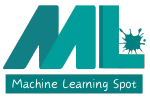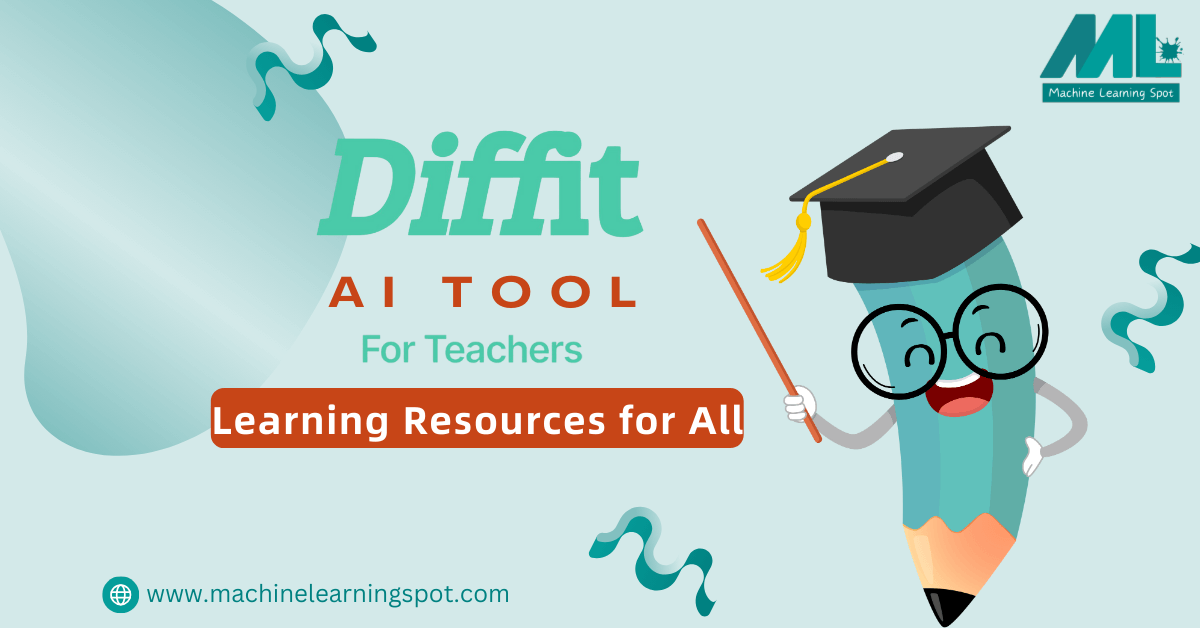Hello teachers! Are you struggling to get the right instructional materials for your lectures? Diffit AI tool is a superb solution in this regard that not only saves you tons of time but also helps your students access grade-level content. That’s the reason for Diffit’s slogan – “Learning resources for all.”
Whether you teach kindergarten or high school students, Diffit covers you all in any form. This is a truly revolutionary platform for educators, which is mainly designed to alleviate the burdens of curriculum planning and differentiation. The Diffit AI tool aims to empower educators and enhance student engagement by claiming time-saving convenience and personalized learning resources, regardless of any grade.
So, are you eager to know more about this innovative AI tool? Let’s move to dissect the functionalities, key benefits, and use cases of Diffit AI tool and see how artificial intelligence has evolved our education system.🎓
Why Diffit AI Tool Matters
In today’s classrooms, students come with diverse needs and learning styles. Ensuring that each student is engaged and challenged is a significant challenge for educators. This is where Diffit steps in, offering a solution to bridge the gap by allowing teachers to adapt existing content, such as articles, websites, and PDFs, to different reading levels.
By doing so, Diffit enables struggling readers to access complex topics through simplified passages while simultaneously providing advanced learners with more challenging versions.
Understand Diffit First
Diffit’s primary goal is to simplify the process of differentiation for teachers. Here’s how it works:
Easy Lesson Customization: Teachers can input various types of content into Diffit, ranging from articles to PDFs. Diffit then analyzes this content and generates versions tailored to different reading levels, typically indicated by grade levels.
Additional Support Features: Beyond adapting the text, Diffit offers a range of helpful features:
- It identifies and explains challenging vocabulary words.
- Generates comprehension questions to assess understanding.
- Provides concise summaries of the text.
- Offers translation capabilities into over 60 languages, promoting inclusivity in diverse classrooms.
Putting Diffit to the Test from A Teacher’s Perspective
To evaluate Diffit’s effectiveness, I experimented with the tool using various types of content across different grade levels. Here’s what I observed:
User-Friendly Interface
Diffit’s interface is intuitive and easy to navigate. Uploading content and selecting desired features is straightforward, catering to teachers with varying levels of technological proficiency.
Effective Differentiation
I found that Diffit does an excellent job of adapting content to different reading levels while maintaining the core meaning of the original text. It simplifies complex concepts without losing their essence, making them accessible to a wider range of students.
Engaging Learning Activities
The automatically generated questions and vocabulary exercises complemented the adapted passages well, providing students with opportunities for additional practice and reinforcement.
Time-Saving Potential
Diffit streamlines the process of content adaptation and activity generation, potentially saving teachers significant time in lesson planning and preparation.
What Did I Get from Diffit AI Tool? (See Below!👇)
In order to see how Diffit works, I personally explored this AI-powered educators’ tool. Interestingly, I just wondering about how perfectly, massively, and promptly it generates output from a single input.
Let me elaborate more profoundly so you can follow it easily!
Firstly, you have to create an account on Diffit; you may sign up with your g-mail for more convenience because many sections wouldn’t be completely disclosed to you if you do not create an account on it.
Once you verify your account, just click on a green button: “Teachers Start Here.” Then, you’ll land on a page where you can give your input to get your desired results. Here, you’ll have THREE options to choose from:
- Literally Anything: to get resources for any topic or lesson
- An Article or Video (URL): to adapt existing materials for any reader
- Any Text or Excerpt: to export and share as student activities
Although, there are three options what Diffit grants you to use. But I experienced the first one comprehensively.
I chose ‘Literally Anything’ to get resources on a topic of my fav for 10th Grade and gave a prompt: “How Proteins are formed? In its response, I got very comprehensive info in various modules and in an array of languages.
First, I got an image of ‘folded proteins’ from Wikipedia (as the image source is given).
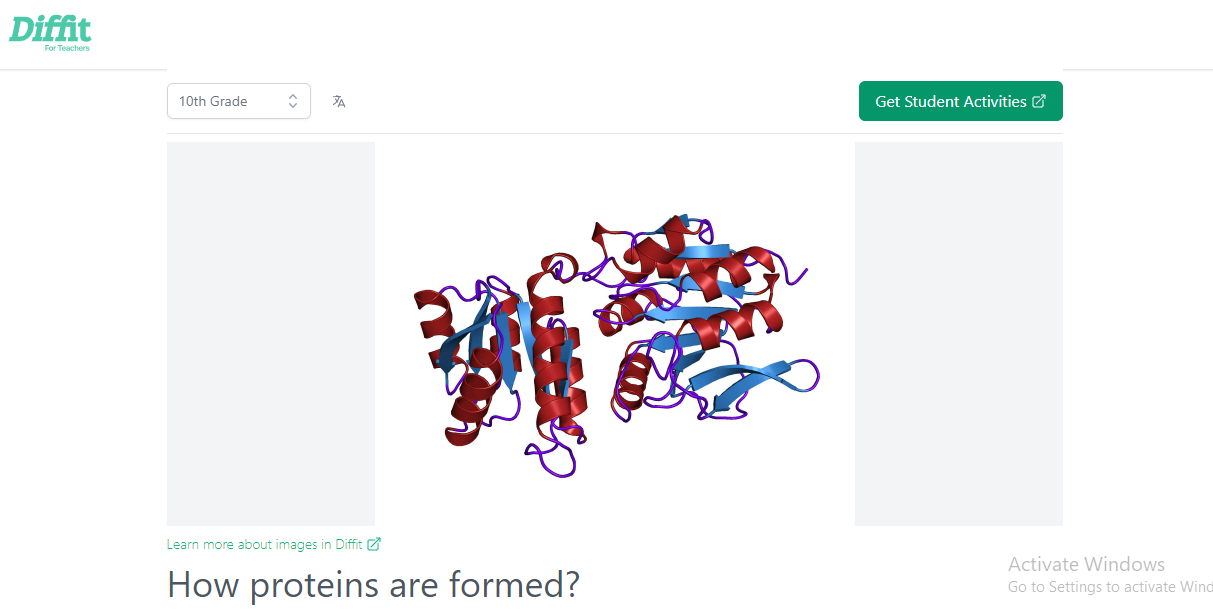
Then, there was a detailed passage to read on proteins that covered these sub-topics:
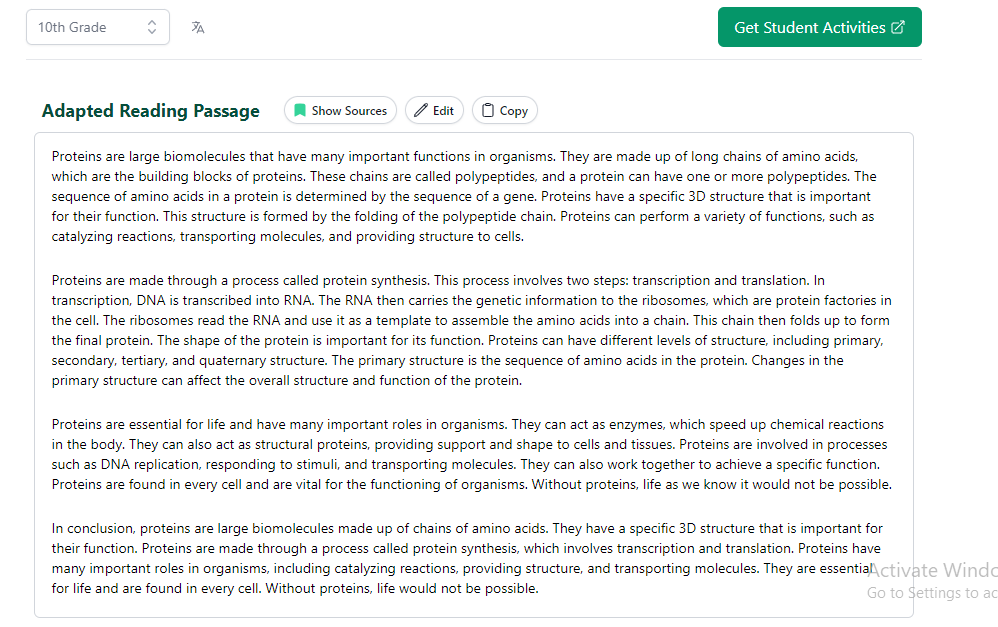
- What are proteins?
- How are proteins formed?
- What’s the function of protein in our body?
Below this, there is a summary of this topic.

Then, Diffit showed key vocabulary words.
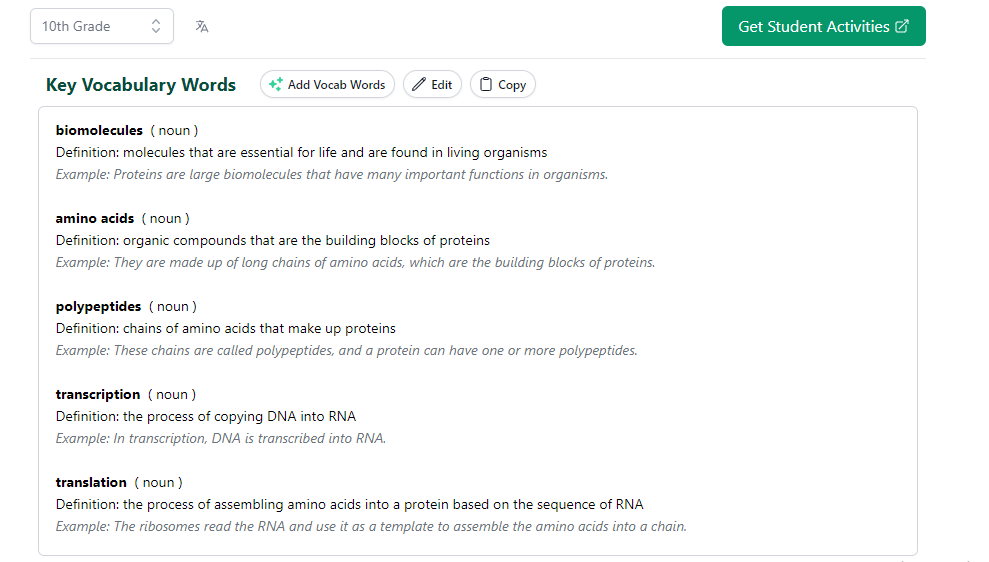
Then, there are THREE major MCQs.
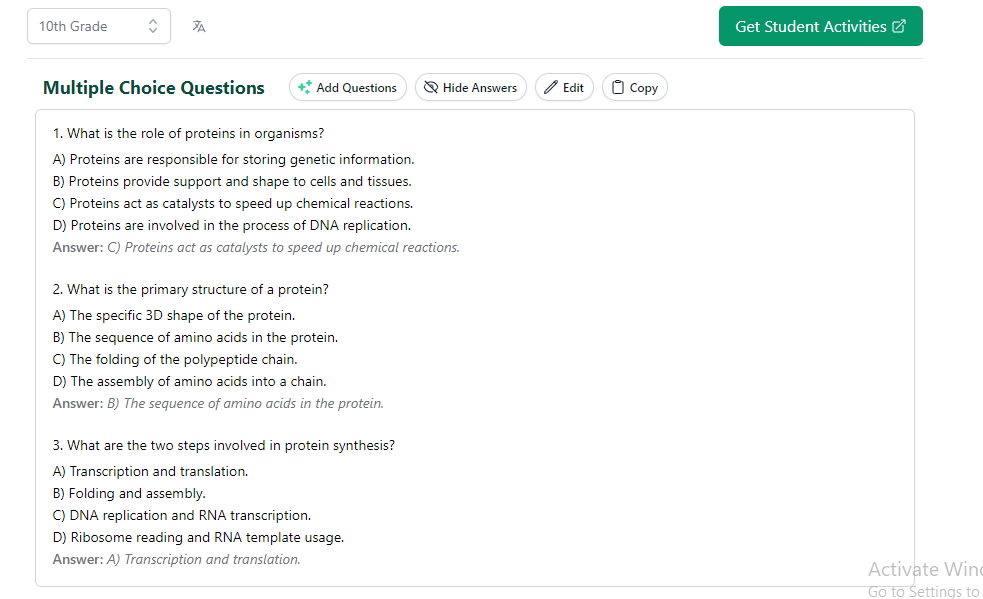
Then, there are some Short Questions with their answers.
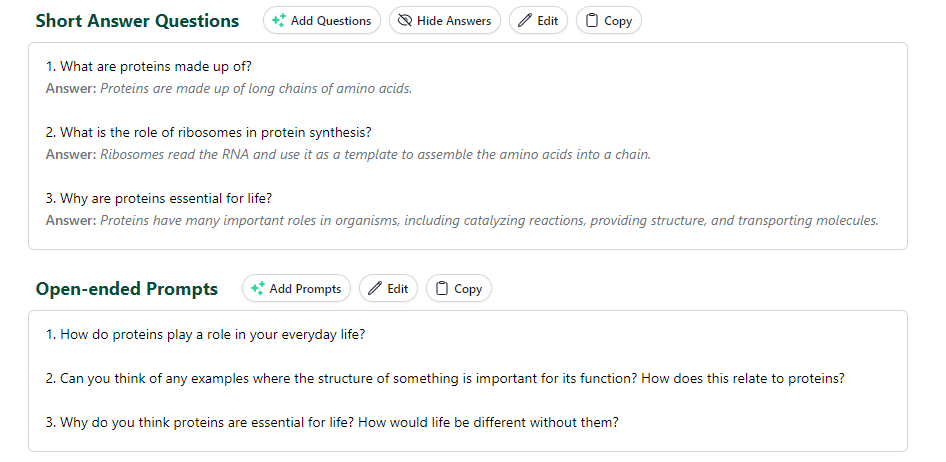
Moreover, you can share any student activity in various formats, such as PDF, Microsoft, Google Classroom, etc.

Beyond Diffit Exploring Additional Differentiation Strategies
While Diffit is a valuable tool, it’s essential to consider other methods of differentiation. Here are some alternatives to supplement Diffit’s capabilities:
- Tiered Activities: Create multiple versions of assignments to cater to different levels of learners, providing appropriate challenges for each group.
- Choice Boards: Empower students by offering them a selection of tasks aligned with the lesson objective, allowing them to choose activities that best suit their interests and learning styles.
- Visual Tools: Utilize graphic organizers such as mind maps and flowcharts to help students organize information visually and make connections between ideas.
- Stations Learning: Divide the classroom into stations with various learning activities, allowing students to rotate and engage with the material in different ways.
Final Thoughts
Diffit AI Tool offers a valuable solution for teachers seeking to personalize learning experiences and accommodate diverse student needs. However, it’s essential to recognize that it is just one tool in a teacher’s toolkit. By combining Diffit with other differentiation strategies and maintaining a focus on student learning objectives, educators can create dynamic and engaging learning environments that cater to the needs of all students.
